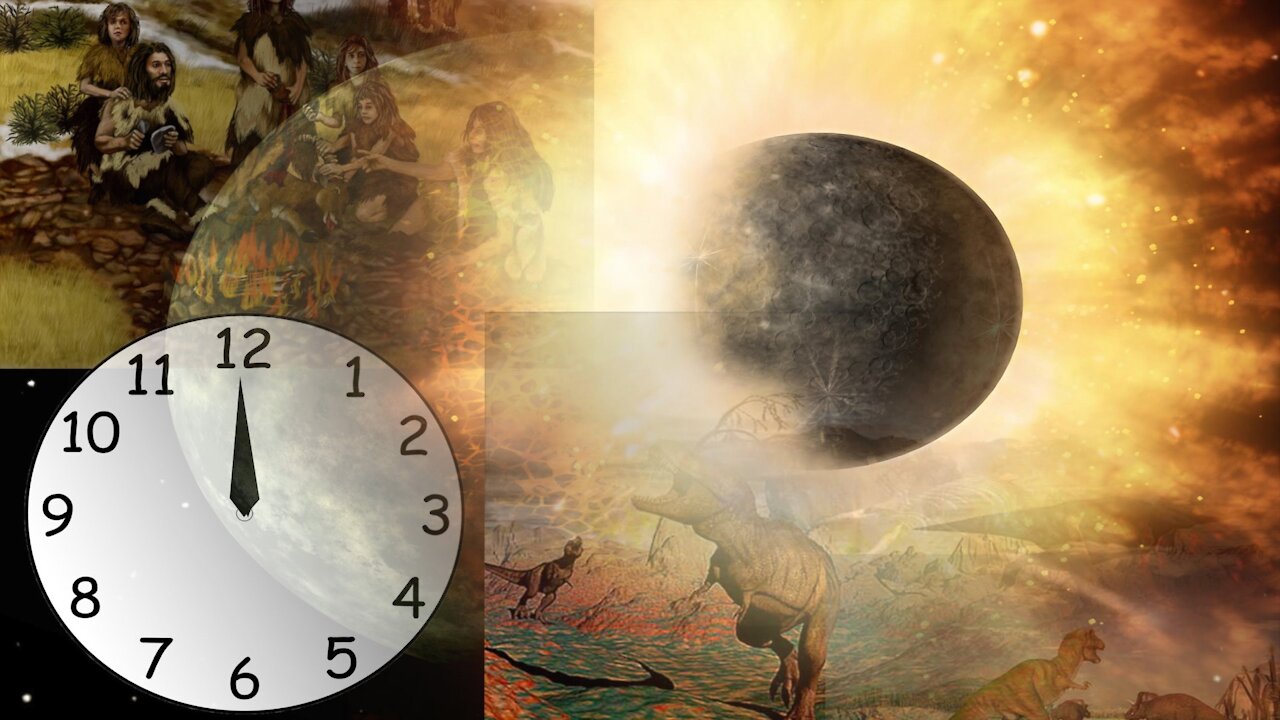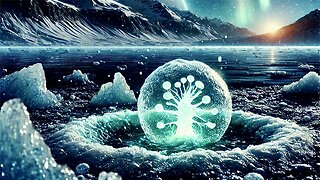Premium Only Content

Mind Blowing Animated Timeline of the History of Earth in 3:30 minutes
Earth, 4.6-billion-years old, grew from a cloud of dust and rocks surrounding the young Sun. 4-3.5b years ago - First organisms...The oldest confirmed fossils, of single-celled microorganisms, are 3.5 billion years old. Life may have begun in warm alkaline vents on the seabed, or in open water, or on land. 3.4b years ago - Life harnesses the power of sunlight - The biggest source of energy for life on Earth is the Sun. Early microorganisms evolved photosynthesis- using energy from sunlight to make sugars out of simpler molecules.
2.4b
For the first half of Earth's history, there was hardly any oxygen in the air. But then some bacteria began harnessing sunlight to make sugar from carbon dioxide and water, just like green plants today. These microbes pumped out oxygen as a waste product, creating the oxygen-rich atmosphere we have today.
1.2b
Between 1.8 billion and 800 million years ago, the fossil record looks fairly dull – so much so that the period is called the 'Boring Billion'. But behind the scenes plenty was happening. For one thing sex may have evolved for the first time. It's not clear why, or when, some organisms stopped simply dividing in two and started the messy business of sex.
850-635m
Earth froze over again, twice, in the space of 200 million years. This 2nd Snowball period may have triggered the evolution of the first complex animals.
535m
The Cambrian Explosion
Soon after animals evolved, evolution went through two major growth spurts. This apparent 'explosion' may be partly down to better fossilization, as many animals now had hard shells.
465m
Plants colonize the land
Out of the sea
Animals ventured onto land as far back as 500 million years ago, but they only visited briefly – perhaps to lay eggs in a place without predators. Plants were the first to take up permanent residence on land. The first land plants were relatives of green algae, but they rapidly diversified.
460-430m
The first mass extinction
The Ordovician period was a time when life flourished. But towards its end, the world froze dramatically as ice sheets spread from the poles leading to the 2nd-worst mass extinction on record, the Ordovician-Silurian. Most life was still confined to the sea, and 85% of marine species were wiped out.
375m
After plants, animals moved out of the water. Insects were among the first, around 400 million years ago, soon followed big, backboned animals such as Tiktaalik, a fish that looked a bit like a salamander that eventually evolved four limbs, and gave rise to amphibians, reptiles and mammals.
320m
Dawn of the reptiles
Reptiles evolved from newt-like amphibians. Unlike their ancestors they had tough, scaly skin and laid eggs with hard shells that did not have to be left in water. They quickly became the dominant land animals.
252m
Just as the reptiles were flourishing, life on Earth faced the Permian extinction, the worst mass extinction in the planet's history, obliterating up to 96% of marine species and land animals. We don't know what caused it, but massive volcanic eruptions could be to blame. In the aftermath, the first dinosaurs evolved.
220m
The first Hairy mammals
At the same time that the dinosaurs were spreading and diversifying, the first mammals evolved.
201m
The dinosaurs were flourishing on land, and ichthyosaurs had become the top sea predators. Then came the Triassic extinction. It killed off around 80% of species. In the aftermath, the dinosaurs became the dominant land animals and eventually reached titanic sizes.
160m
The first birds
Birds evolved from feathered dinosaurs – modern birds are essentially Velociraptors with beaks instead of snouts and wings instead of arms.
65m
Death of the dinosaurs
Boom, you're extinct. 65 million years ago, a huge chunk of rock from outer space smashed into what is now Mexico. The explosion was devastating, but the longer-term effects were worse. Dust thrown into the upper atmosphere blocked out sunlight, plunging Earth into cold and darkness.
55m
After the dinosaurs were wiped out, mammals evolved the ability to nourish their young inside their wombs using a placenta. These mammals evolved into the first primates and would ultimately give rise to monkeys, apes and humans.
13-7m
The first hominins
The first apes appeared in Africa around 25 million years ago. Then the group split into the ancestors of modern humans and the ancestors of modern apes. The oldest known hominid lived about 7 million years ago.
200,000 years ago
Our species, Homo sapiens, is ridiculously young. We have only existed for a fifth of a million years.
Music: Forgotten Shore by Dhruva Aliman
Amazon - https://amzn.to/3ex2DEb
https://music.apple.com/us/artist/dhruva-aliman/363563637
https://dhruvaaliman.bandcamp.com/album/neptunes-overtone
http://www.dhruvaaliman.com/
Spotify - https://open.spotify.com/artist/5XiFCr9iBKE6Cupltgnlet
#world
#evolution
#dinosaurs
-
 48:29
48:29
Seeker Land
16 days agoSnowball Earth ~ The Cryogenian Ice Age That Birthed Complex Life On Earth
1341 -
 2:07:26
2:07:26
Kim Iversen
5 hours agoFAFO: Trump's ‘Deport or Get Tariff’d’ Plan Worked | Did Trump Reveal The REAL Gaza Death Toll?
27.2K59 -
 LIVE
LIVE
Danny Polishchuk
10 hours agoDeportations Begin + Guest Jay Dyer | Low Value Mail Live Call In Show
1,387 watching -
 1:10:08
1:10:08
Donald Trump Jr.
7 hours agoWhat Real Leadership Looks Like, Live with Sen Bernie Moreno | TRIGGERED Ep.210
122K203 -
 1:38:57
1:38:57
Glenn Greenwald
6 hours agoWith Tulsi's Hearing this Week, Establishment Attacks her with Lies About Snowden & 702; U.S. Journalist Arrested in Switzerland for Criticizing Israel; China's Leap Forward in AI | SYSTEM UPDATE #397
55.7K71 -
 57:43
57:43
The StoneZONE with Roger Stone
3 hours agoWhat Will The JFK Assassination Files Reveal? | The StoneZONE w/ Roger Stone
19K8 -
 18:24
18:24
Tundra Tactical
5 hours ago $0.36 earnedWhats New With HRT Tactical Gear at SHOT Show 2025
39.8K5 -
 23:27
23:27
Rethinking the Dollar
5 hours agoWealth Protection SECRETS Learned from Wildfires w/ Paul Stone
36.6K3 -
 DVR
DVR
Flyover Conservatives
21 hours agoInsider Reacts to Trump’s 100 Hours: Davos, WHO, Climate Change, DEI… - Alex Newman | FOC Show
17.6K -
 1:04:30
1:04:30
Battleground with Sean Parnell
8 hours agoPresident Trump Is Flooding The Zone
104K10